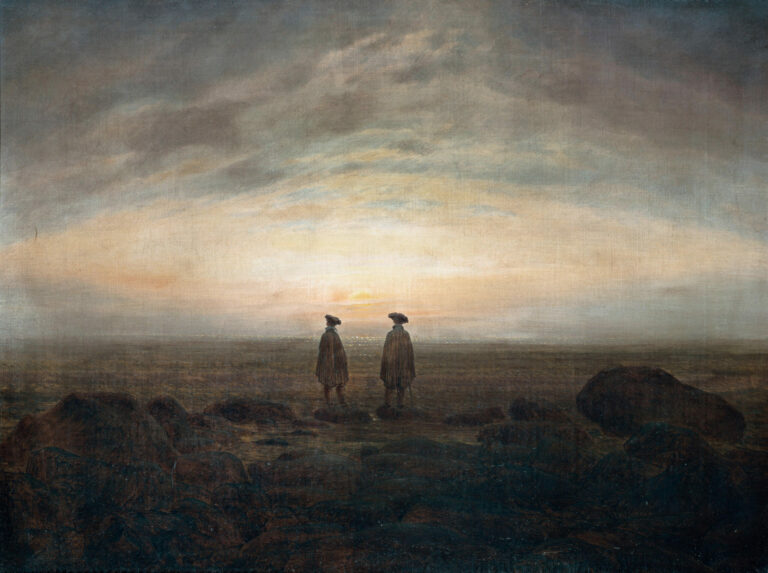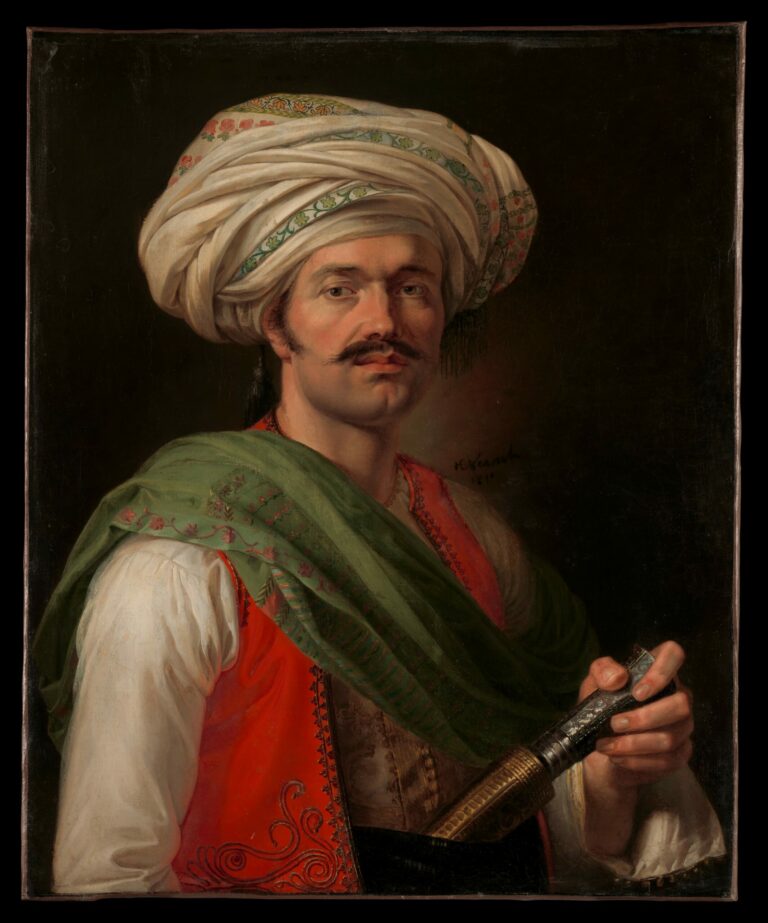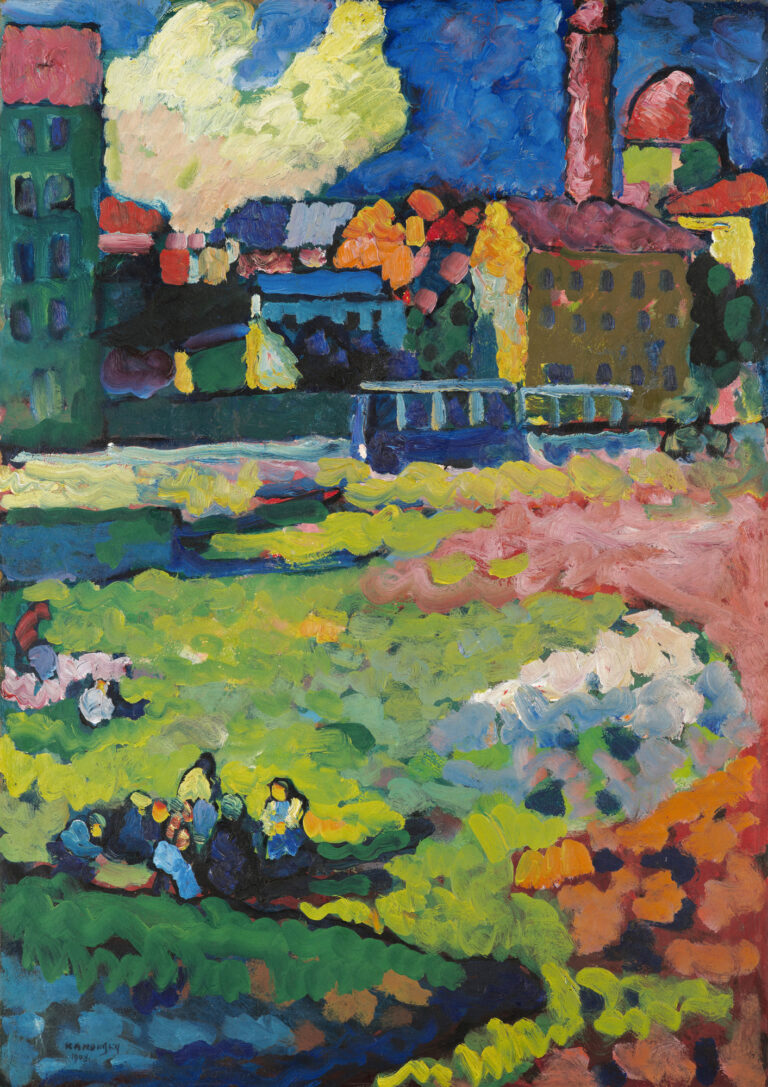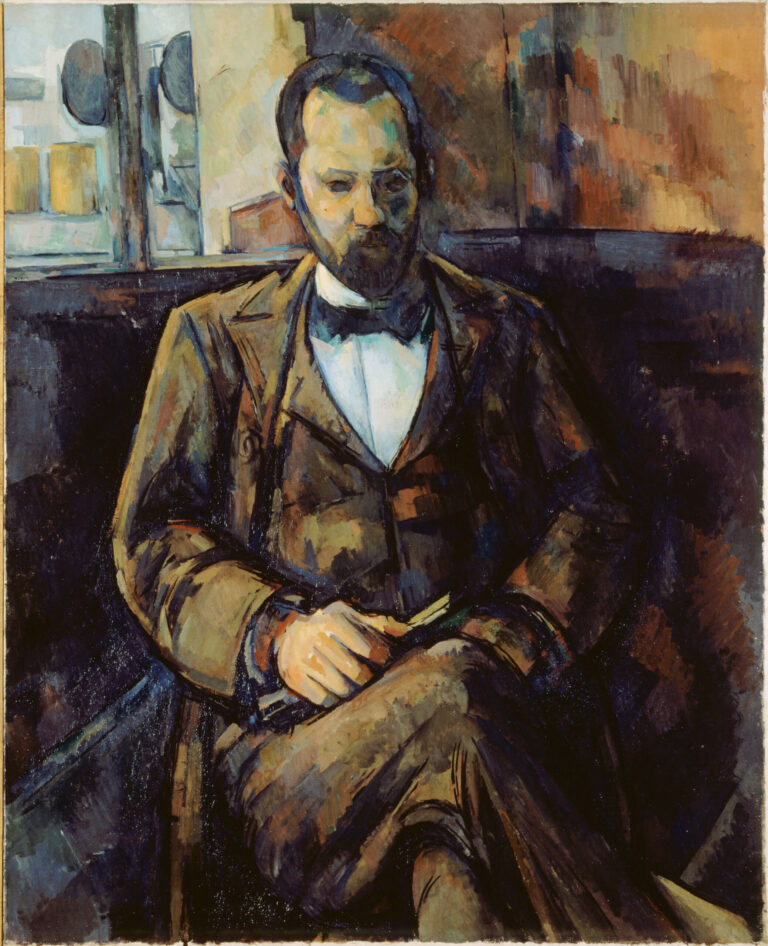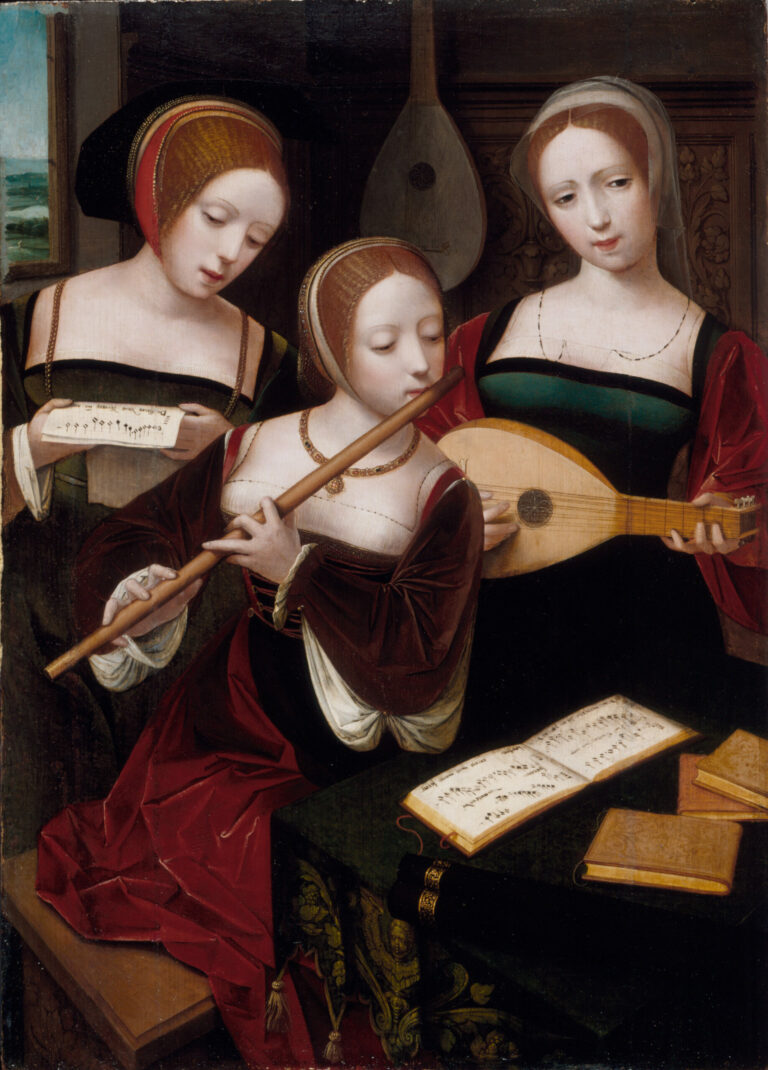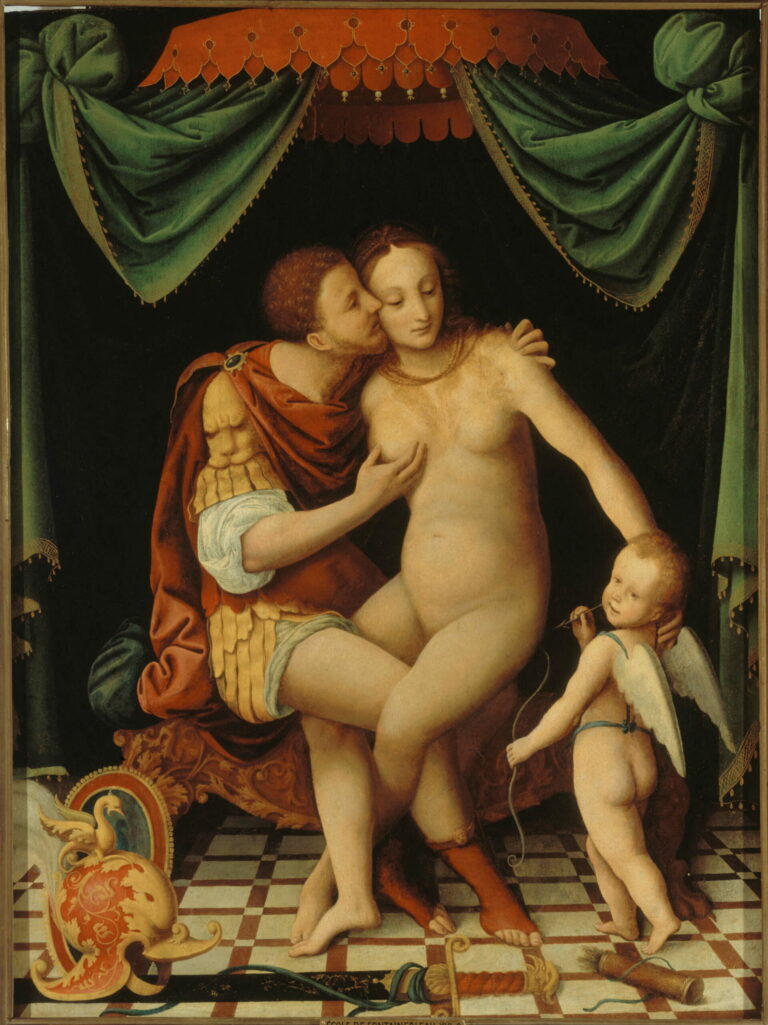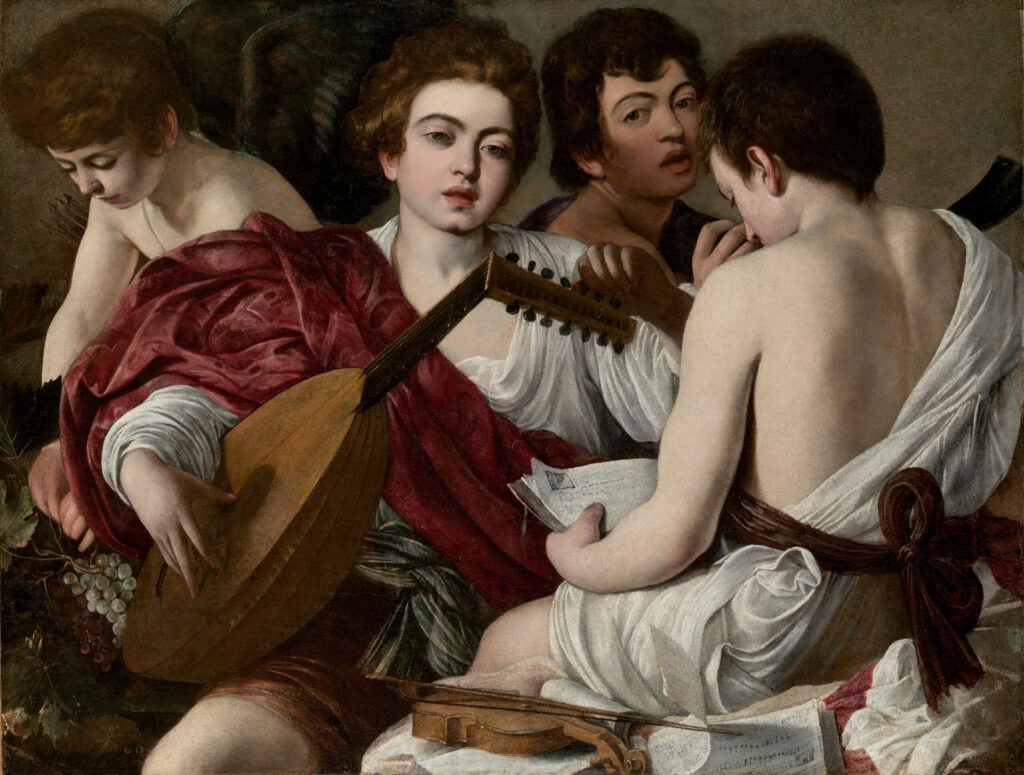
In this emotionally vibrant canvas, Caravaggio immerses us in the intimacy of an impromptu concert where four young men engage in the musical arts with palpable intensity.
The second figure from the right is believed to be a self-portrait. The bold composition, centered on these half-length figures, creates a disquieting proximity with the viewer.
The subtle play of chiaroscuro, the master’s signature technique, sculpts the youthful faces and sumptuous draperies, particularly the brilliant scarlet cape that illuminates the scene. The lute, held by the central figure with an enigmatic gaze, becomes the pivot of this silent choreography, while the sheet music and violin in the foreground demonstrate an almost documentary precision. One detects Caravaggio’s characteristic tension between meticulous observation of everyday life and allegorical elevation. The clusters of grapes add a Bacchic dimension to this celebration of the senses, where music becomes a metaphor for harmony and ephemeral pleasure.
Further Information
- The Musicians by Caravaggio, 1597
- 36 1/4 x 46 5/8 in. (92.1 x 118.4 cm)
- The Metropolitan Museum of Art, Fifth Avenue, New York, not currently on display
- https://www.metmuseum.org/art/collection/search/435844
Michelangelo Merisi, known as Caravaggio (1571-1610), revolutionized Italian painting at the dawn of the 17th century through his naturalism and mastery of light. “The Musicians,” painted in 1597, marks a turning point in his career, coinciding with his entry into the service of Cardinal del Monte, his first great patron. This Roman period saw Caravaggio develop the innovative style that would transform Western art, with figures captured in their raw truth, torn from darkness by theatrical lighting. Behind the apparent classicism lies the tumultuous personality of the artist, whose life was marked by scandal and violence.

